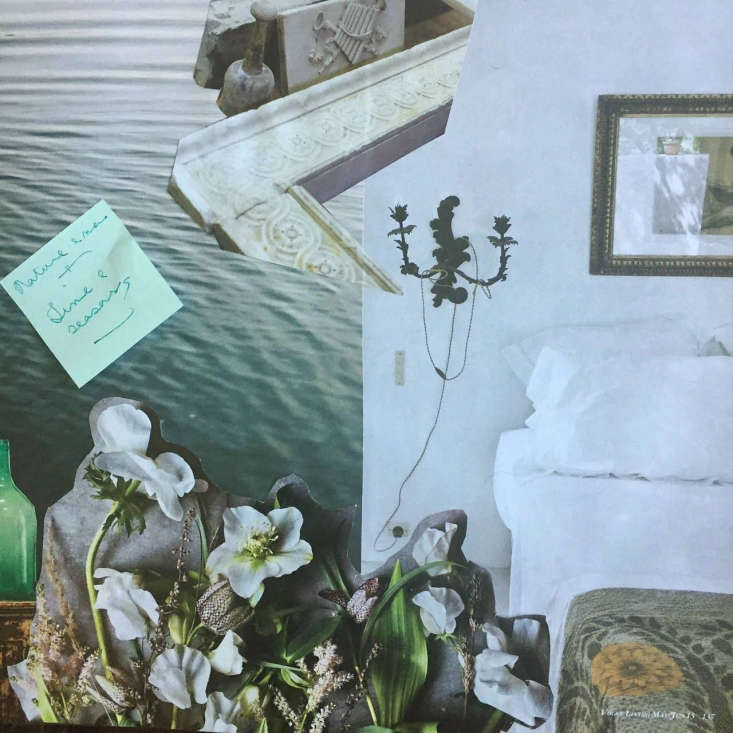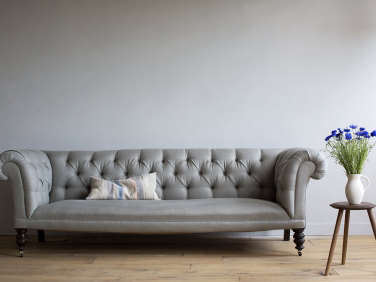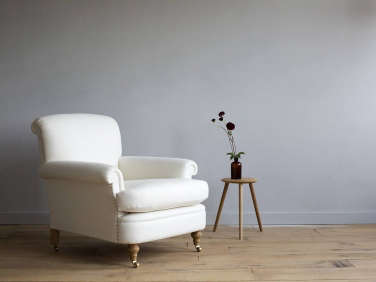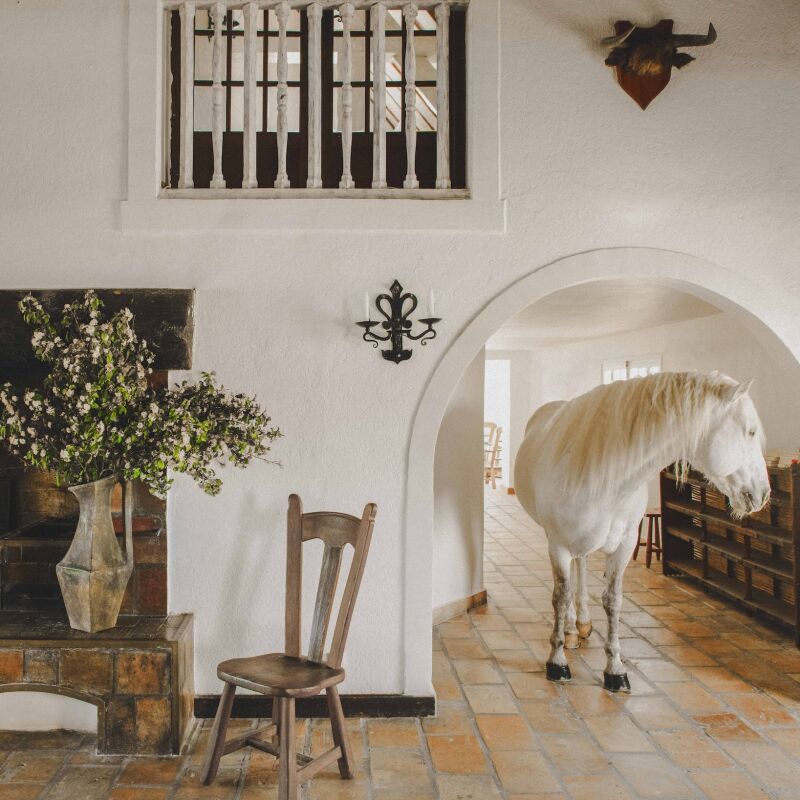Designing with intuition is easier said than done, but Cassandra Ellis, a New Zealand–born designer living in London, does it right. In her designs, she welcomes personality and avoids trends to create unforced, emotive spaces. At the center of her work is storytelling; “living not decorating,” she says.
We like Cassandra’s take on the decorating ideal: “The magic is that it isn’t officially interior decorated, it is instead a long and rambling poem revealing someone’s life,” as she writes about Kettle’s Yard in Cambridge, England.
If you’re anything like we are, you’re always working on that poem, and more often than not, trying to get in touch (or get back in touch) with your personal sense of style. We asked Cassandra how she does it and this is what she told us.
1. Create a sense of place.
“When you are welcomed into a person’s home, you hope to catch a whiff of who they are. You want to understand their likes, dislikes, views, and overall approach to life and hope that it chimes comfortably with the person themselves. Of course, you want to know what it looks like—but once you’ve got over that, your biggest impression will be how it feels. Conversely, when you welcome someone into your home, you are showing them a visual and very personal manifestation of who you are. Or you should be, because your home should be your story teller—the weaver of the red thread and a marker of you and yours.”

2. Consider your stylistic roots.
“You must be aware of your own stylistic roots—who you are and who, and what, has influenced you. Remember what shaped and excited you as a child, as much as your own adventures as an adult. My childhood home felt like home partly because our family pets were buried under the apple tree and it gave me a great sense of place. This translates into my adult homes in that wild orchard-like gardens and animals are always there.”

3. Tune out the noise.
“When creating your own home, it’s super important to forget/positively ignore what anyone else thinks you should do. Your mother, best friend, monthly interiors magazine all have no idea of that particularly unique thread that you need. They are looking at your home from their own perspective of you or in the case of some media, what they want you to buy to neatly fit in with this seasons trends.”

4. Be honest with yourself.
“Before you start, you need to know what fills you up and what brings you down (man). What sparks joy and what depresses you. Red will never find its way into my home and I personally struggle with the concept of super-spec’d kitchens. Plus, I don’t own a telly. I do love ephemera, sheepskins, curtain-free windows and dogs, and always have. Some, or all of these, may make you break into a cold sweat. Just remember, that one’s approach to creating your home is not better taste or on trend more than someone else’s (and who cares anyway). I often visit or read about the homes and creative spaces of thinkers, designers, and makers who emphatically chose a very personal way of living. I may not like their choices or their aesthetic leanings, but it is encouraging to understand the freedom they had from creating their own visual world. It doesn’t mean you should replicate what they do, rather give yourself the thumbs-up if you dive head first into your own personal passions.”

5. Create a storyboard.
“Creating something that is a visual curation of what you want your home to be, is a great way to begin. And where you start is with a Storyboard—not a Pinterest/online image board—rather a cut out and keep ‘how do I want to live in my home and how do I want it to feel’ storyboard. Like all simple and pure creative processes you just need a really large piece/roll of card, glue/tape, a stack of printed material, some writing tools and scissors. Pull out images, words, and colors from the magazines, catalogues, brochures, tickets, postcards from exhibitions, poems, paint charts—anything that speaks to you. Print off anything you’ve stored on your phone or computer too. Note that this storyboard isn’t the place to create a shopping list of things you’d like to buy—you can do that later. Try not to use images of anything that’s on-trend—because what comes in, goes out—I’m talking to you dark-blue-kitchen-with-a-Carrera-marble-worktop-and-brass-handles…”

6. Edit, edit, edit.
“Then create a visual board of what home is to you—something that shows an outward expression of what it should feel like. Cut things out, move them around, and paste a collage together. You can lay it out and take pictures with your phone and move images around before you finally commit. Write on it if you want to. Add some color swatches—whatever it is that makes this board a representation of your home.”

7. See the story emerge.
“Once you have done this, you’ll very clearly see a story emerging. Involve everyone in your home in this process. It isn’t easy, but it is worth it. I think that this is the very best place to start understanding how to create a home that reflects you. Put it somewhere you can see it every day. Live with it, change it, but take your time to know that it’s you. Because creating a personalized space isn’t a race, it’s your home.”

- Simple, Useful, Beautiful: A New Line of Furniture from Cassandra Ellis
- A Refined Terrace House in London by Cassandra Ellis
- On the Market: Designer Cassandra Ellis’s London Flat






Have a Question or Comment About This Post?
Join the conversation (0)